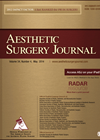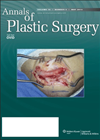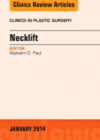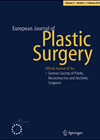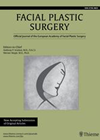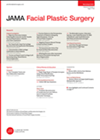
Journal Reviews archive for April 2014
Malar mounds and festoons
Periorbital rejuvenation and blepharoplasty, in particular, are very common procedures nowadays in aesthetic practice. More than 153,000 blepharoplasty procedures were peformed in the USA during 2012. Blepharoplasty can sometimes be a very challenging surgery, especially if the patient presents with...
Optimal placement of brachioplastic scars
The authors present the findings of a survey evaluating four different types of brachioplasty scars. Scars examined were either medial, placed in the bicipital groove (both straight and sinusoidal) or posterior, placed in the brachial sulcus (both straight and sinusoidal)....
Surgical management of subungal melanoma
The authors present the findings of a retrospective, single-institution review of all patients with biopsy confirmed subungal melanomas over a period of 96 years in Mayo Clinic. Parameters examined were general demographics, level of digit amputation, disease recurrence, overall survival,...
The original suture suspension necklift before the i-guide
In this excellent issue of the Clinics in Plastic Surgery the topic of neck lifting is discussed. This covers the assessment, non-surgical management, minimally invasive techniques and open techniques. This invited paper looks into the authors’ experience of suture suspension...
An elegant extension to the facelift, resulting in good neck correction
The author discusses his experience in over 200 cases of an overlapping plication platysmaplasty technique via the facelift incision, thus avoiding a submental incision. A logical argument is made to the benefit of the procedure, providing more extensive retraction in...
Correcting lower lateral cartilage absence
Congenital absence of the lower lateral nasal cartilage is rare. The authors discuss correcting the absence using an open approach technique to harvest septal cartilage. This is then fashioned into a shield graft and a supporting strut graft to define...
Reconstruction after maxillectomy
Maxillectomy for tumours of the paranasal sinuses creates large, complex defects. Whilst free flaps appear to be the preferred method of reconstruction, the best type is unclear. This article discusses a single unit’s experience using different free flaps for reconstruction....
Conchal cartilage to reconstruct nasal septum
The authors discuss a common problem involving the loss or damage to the nasal septum. The most common causes are iatrogenic and previous surgery. The loss of the nasal septum is frequently also seen in repeated trauma and reconstruction using...
Polydioxanone in septal reconstruction
Septal reconstruction is a challenging problem and is undertaken for functional or cosmetic reasons or a combination of both. Either autologous cartilage, commonly auricular, or other alloplastic material can be used. The authors describe the use of a polydioxanone (PDS)...
Distal edge necrosis in cervicofacial rotation-advancement flaps
Mohs facial reconstructive surgery can be a difficult process for a patient to undergo. The goal of facial reconstruction is to restore contour, function and aesthetics while minimising morbidity. The authors conducted a review of 88 patients who underwent cervicofacial...
Total nasal tip reconstruction with autologous auricular cartilage
This paper shows an original and effective procedure for total nasal tip framework reconstruction using autologous auricular cartilage. The authors explain how the seagull-wings technique, described some years ago by one of them (Fernando Pedroza) to treat severe nasal tip...
A useful regional flap for head and neck reconstruction
This article explains the experience of the head and neck department of the Massachusetts Eye and Ear Infirmary with a seldom used regional flap, the supraclavicular artery (SCA) fasciocutaneous flap. This versatile flap is based on the supraclavicular artery, a...

